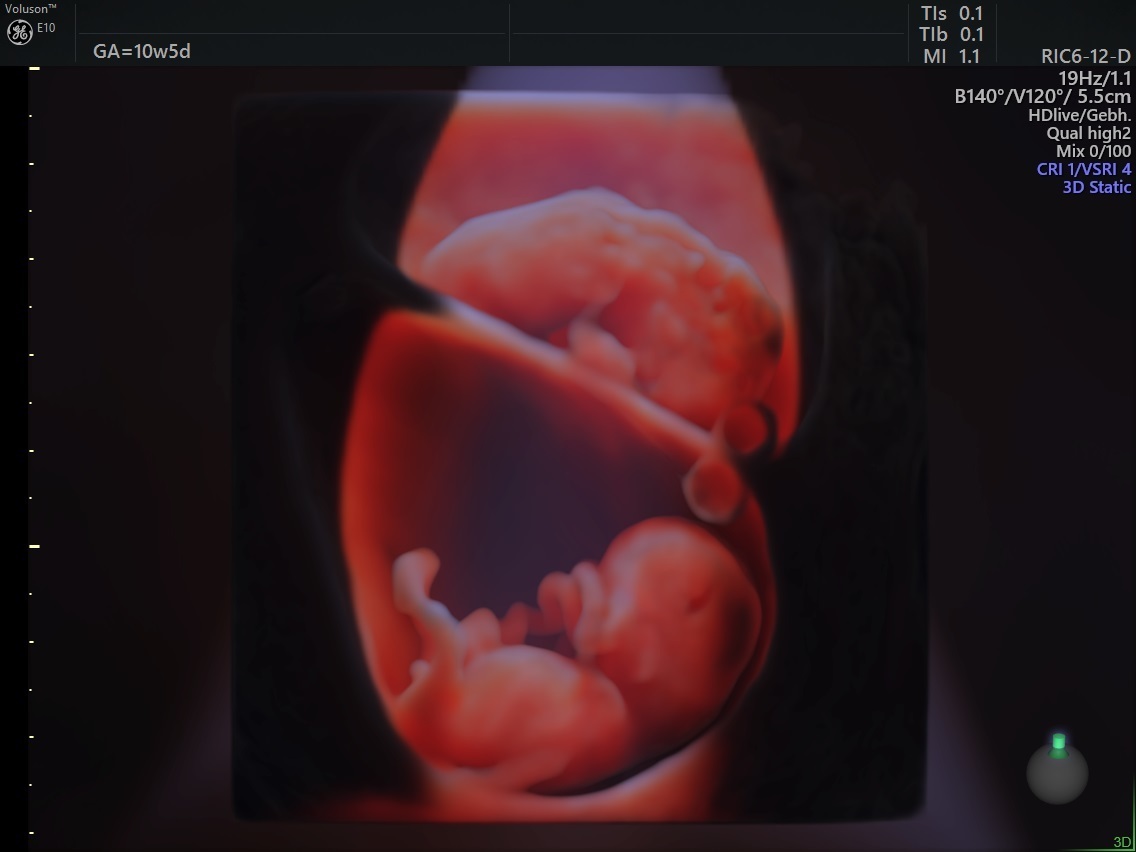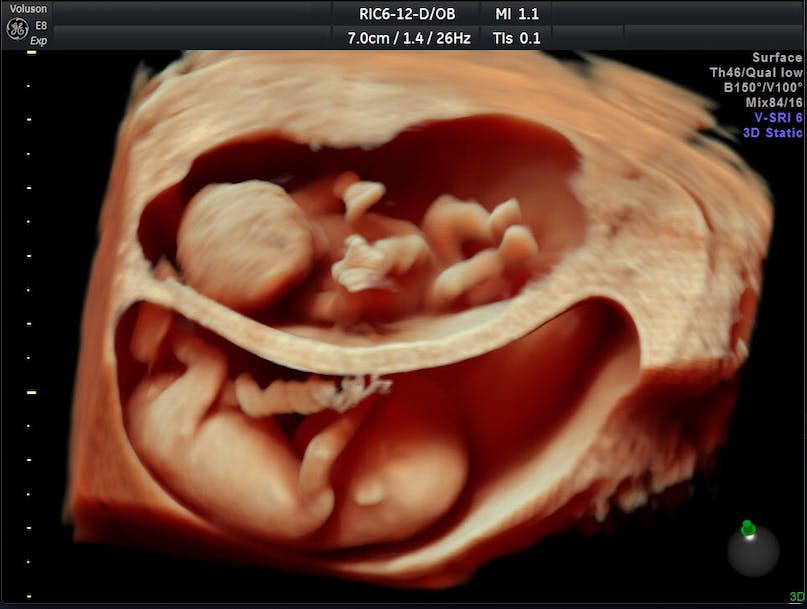After climbing for more than three decades, the twin birth rate in the United States fell 4 percent during the span of 2014 to 2018, the Centers for Disease Control and Prevention reports. There were 32.6 twins per 1,000 births in 2018 — the lowest rate in over 10 years. The rate of triplets and higher-order multiples has declined even further since its peak in 2003.
Most demographers attribute the original surge in multiple gestations that began in the 1980s to the use of fertility treatments and more people delaying parenthood. Until recently, reproductive endocrinologists routinely transferred two or more embryos during IVF cycles.
Because pregnancies with multiple gestations are always considered high risk, identifying them as early as possible is crucial. Confirming these pregnancies accurately — mainly focusing on twin gestations since they are more common than higher-order multiples — is a critical skill for both OB/GYNs and fertility clinicians.
Zygosity: Identifying Types of Twins
Multiple gestations should ideally be confirmed by 14 weeks into the pregnancy for the best management of follow-up and possible adverse events, reports a study from the International Journal of Gynecology and Obstetrics. After pregnancy has been confirmed, the first step to identifying multiple embryos is to use transvaginal ultrasound to determine the fetuses' zygosity.
Dizygotic (DZ) twins, which represent two-thirds of all twin pregnancies, occur when two eggs are fertilized by two sperm. The resulting embryos implant separately in the uterus. DZ twins are always fraternal, with approximately half the same sex and half a different sex.
Monozygotic (MZ) twins occur when one egg is fertilized by one sperm, and the resulting embryo splits in two. Approximately two-thirds of these twins share a placenta, with one-third having separate placentas. MZ twins are always identical.
Next, transvaginal ultrasound can identify the number of outer (chorionic) and inner (amniotic) membranes that surround the fetuses to determine the type of twins:
- Dichorionic-diamniotic (Di/Di): Have their own chorions and amniotic sacs, most often do not share a placenta, and can be identical or fraternal.
- Monochorionic-diamniotic (Mo/Di): Share a chorion but have separate amniotic sacs, share a placenta, and are always identical.
- Monochorionic-monoamniotic (Mo/Mo): Share one chorion and one amniotic sac, share a placenta, and are always identical.
According to the American College of Obstetricians and Gynecologists (ACOG), multiple gestations that share placentas have the highest risk of complications, including twin-twin transfusion syndrome (TTTS) for Mo/Di and umbilical cord complications for Mo/Mo. TTTS is when one twin shares blood with the other, resulting in the donor receiving too little blood and the recipient receiving too much. Mono/Mono pregnancies are rare but very risky, typically requiring frequent ultrasound monitoring and a cesarean section birth, according to ACOG.

Twins at 10 weeks with gestational sacs on ultrasound.
Before 10 Weeks Gestation: Chorionicity and Amnionicity
To determine chorionicity, physicians should use transvaginal ultrasound to identify the number of gestational sacs, yolk sacs and amniotic sacs within the chorionic cavity. The number of gestational sacs and fetal heartbeats are correlated with chorionicity. Gestational sacs form a chorion and placenta. A single gestational sac observed with two heartbeats indicates a monochorionic twin pregnancy. Two gestational sacs indicate a dichorionic pregnancy. Using this method to determine chorionicity before 10 weeks gestation has nearly perfect accuracy.
Although there is some debate on this matter in the reproductive medicine community, typically, if there are two yolk sacs, the pregnancy is diamniotic. However, if there is only one, it is recommended to repeat the yolk sac ultrasound later in the first trimester, as this is not a definitive indication of a monoamniotic pregnancy.
Transvaginal ultrasound is preferable to transabdominal ultrasound for conducting an amnion evaluation, as the intertwin membrane is very thin. The number of amniotic sacs within a gestational sac ultrasound identifies amnionicity in a monochorionic pregnancy. If visualization of the membrane is difficult, change the angle of insonation and increase the gain. If this adjustment does not reveal any new information, repeated ultrasound scans are necessary.
Ongoing Ultrasound Monitoring
It is important to refer patients with multiple pregnancies to a maternal-fetal medicine specialist to increase the likelihood that any complications will be detected early on. For clinicians who need more training on pregnancy confirmation, organizations like the American Institute of Ultrasound in Medicine and the International Society of Ultrasound in Obsterics and Gynaecology provide a host of educational resources.


